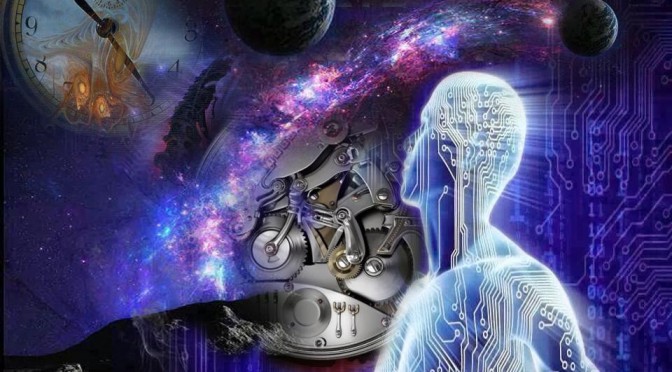“Time” as we know it doesn’t really exist, and a great experiment that illustrates this is called the delayed choice/quantum eraser experiment. It shows us that what happens in the present can actually change what happened in the past. Pretty crazy isn’t it? In fact, it doesn’t even make sense, and when we choose to examine what we call reality (matter) at the quantum level, a lot of stuff doesn’t make sense, but that’s normal.

This is precisely when Richard Feynman, a Nobel laureate of the twentieth century said that “we choose to examine a phenomenon which is impossible, absolutely impossible, to explain in any classical way and which has in it the heart of quantum mechanics.
In reality, it contains the only mystery.” (Radin, Dean. Entangled Minds: Extrasensory Experiences In A Quantum Reality. New York, Paraview Pocket Books, 2006)
Apart from this experiment illustrating how what happens in the present can change what happened in the past, it also shows that time can go backwards, that cause and effect can be revered, and how the future caused the past!
In 2007 (Science 315, 966, 2007), scientists in France shot photons into an apparatus and showed that their actions could retroactively change something which had already happened.

Originally, this was physicist John Wheeler’s experiment, but the results of it have been replicated multiple times. The latest example comes from physicists at The Australian National University (ANU). The findings were recently published in the journal Nature Physics.
“If we attempt to attribute an objective meaning to the quantum state of a single system, curious paradoxes appear: quantum effects mimic not only instantaneous action-at-a-distance, but also, as seen here, influence of future actions on past events, even after these events have been irrevocably recorded.”
– Asher Peres, pioneer in quantum information theory (source)(source)(source)
The Experiment
An easy way to understand this experiment is through John Wheeler’s cosmic scale explanation:
1. Imagine a star emitting a photon billions of years ago that is heading in the direction of the planet.
2. Imagine a galaxy between us and the star.
3. To get to our planet, the photon will have to go one of two paths, left or right.
 4. Billions of years later, if we decide to set up a device to “catch” the photon, the resulting patter would be an interference pattern.
4. Billions of years later, if we decide to set up a device to “catch” the photon, the resulting patter would be an interference pattern.
This means that the photon went left, and it went right, and on the apparatus it represented itself as a wave of possibilities, rather that just one set path. This demonstrates that the photon took one way, and it took another way.
5. If we decided to set up a device that could look at the incoming photon, the very act of measuring or watching which way the photon came in means that it can only come in from one side. It would arrive at the device and represent itself in one way, instead of a wave of possibilities.
This means that how we choose to measure “now” affects what direction the photon took billions of years ago. Our choice in the present moment affected what had already happened in the past.
 Again, this makes no sense, but quantum physics rarely does, and it shows us just how little we know about the true nature of our reality.
Again, this makes no sense, but quantum physics rarely does, and it shows us just how little we know about the true nature of our reality.
This experiment also suggests that quantum entanglement (which has also been verified, read more about that here) exists regardless of time. Meaning two bits of matter can actually be entangled, again, in time.
Time as we measure it and know it, doesn’t really exist.





No comments! Be the first commenter?